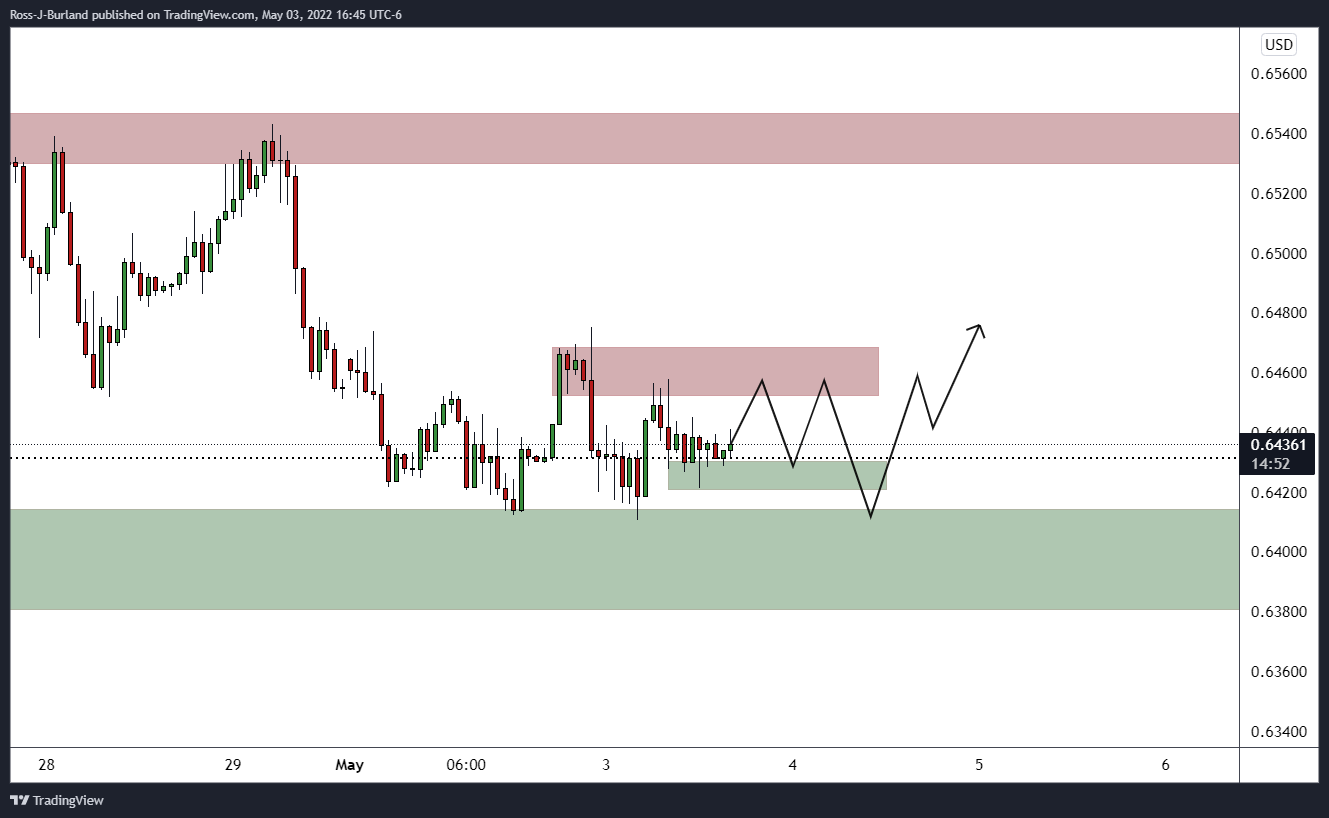- Analytics
- News and Tools
- Market News
- New Zealand Employment Report leaves NZD sidelined ahead of Fed
New Zealand Employment Report leaves NZD sidelined ahead of Fed
The first quarter labour market data for new Zealand has arrived and has little effect n the price of NZD with the Unemployment Rate coming in as expected at 3.2%. The focus is on the Federal Reserve.
Employment Report
Unemployment rate 3.2 pct (Reuters poll 3.2 pct).
Q1 s/adj jobs growth +0.1 pct QoQ (Reuters poll +0.1 pct).
Q1 participation rate 70.9 pct (Reuters poll 71.1 pct).
Q1 lci private sector wages (ex-o'time) +0.7 pct on pvs qtr (Reuters poll +0.7 pct).
Q1 lci private sector wages (ex-o'time) +3.1 pct on year ago (Reuters poll +3.1 pct).
Some may have been a touch disappointed that the Unemployment Rate did not come in lower vs Q4, 3.2%. However, markets will continue to expect tightness in the labour market and a need for the central bank to tighten rates at this month's meeting. A 50bp OCR hike is on the cards as it is evident that the Reserve Bank of Nzezealand is eager to get on top of inflation expectations.
NZD/USD update

The price is testing a weekly demand area and a correction higher could be on the cards, although this will depend on the Fed in the near term and then the RBNZ.

The price, from an hourly perspective, remains within a sideways channel.
Meanwhile, the focus is on the Federal Reserve and ''if the Fed frames near term aggressive hikes as likely to limit the terminal rate, that could slow the USD’s ascent near term,'' analysts at ANZ Bank argued.
About the Unemployment Rate
The Unemployment Rate released by the Statistics New Zealand is the number of unemployed workers divided by the total civilian labor force. If the rate is up, it indicates a lack of expansion within the New Zealand labor market. As a result, a rise leads to weaken the New Zealand economy. A decrease of the figure is seen as positive (or bullish) for the NZD, while an increase is seen as negative (or bearish).released by the Statistics New Zealand is the number of unemployed workers divided by the total civilian labor force. If the rate is up, it indicates a lack of expansion within the New Zealand labor market. As a result, a rise leads to weaken the New Zealand economy. A decrease of the figure is seen as positive (or bullish) for the NZD, while an increase is seen as negative (or bearish).
© 2000-2024. All rights reserved.
This site is managed by Teletrade D.J. LLC 2351 LLC 2022 (Euro House, Richmond Hill Road, Kingstown, VC0100, St. Vincent and the Grenadines).
The information on this website is for informational purposes only and does not constitute any investment advice.
The company does not serve or provide services to customers who are residents of the US, Canada, Iran, The Democratic People's Republic of Korea, Yemen and FATF blacklisted countries.
Making transactions on financial markets with marginal financial instruments opens up wide possibilities and allows investors who are willing to take risks to earn high profits, carrying a potentially high risk of losses at the same time. Therefore you should responsibly approach the issue of choosing the appropriate investment strategy, taking the available resources into account, before starting trading.
Use of the information: full or partial use of materials from this website must always be referenced to TeleTrade as the source of information. Use of the materials on the Internet must be accompanied by a hyperlink to teletrade.org. Automatic import of materials and information from this website is prohibited.
Please contact our PR department if you have any questions or need assistance at pr@teletrade.global.















